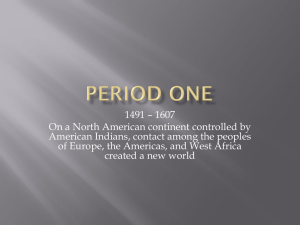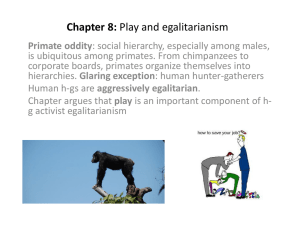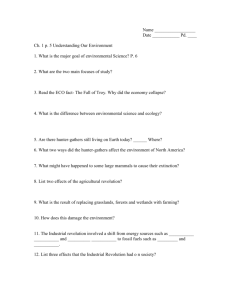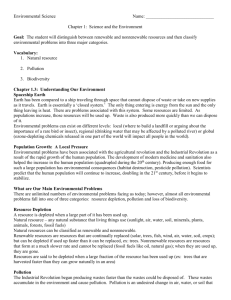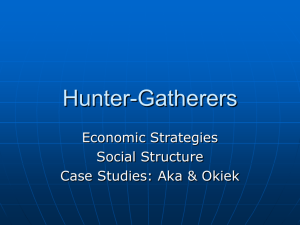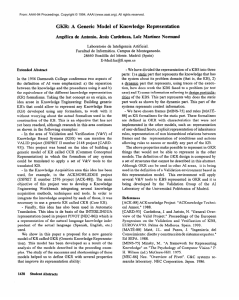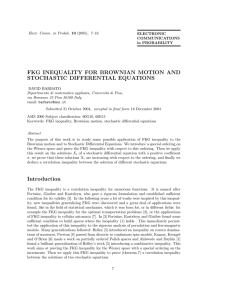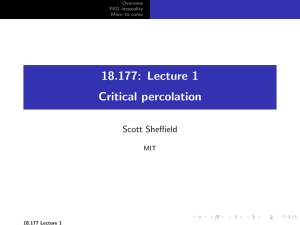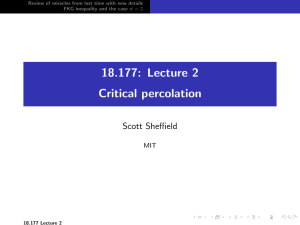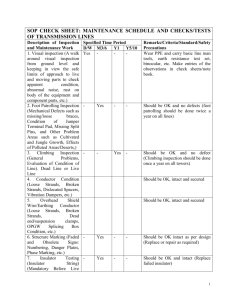Ch 1.1 ppt
advertisement
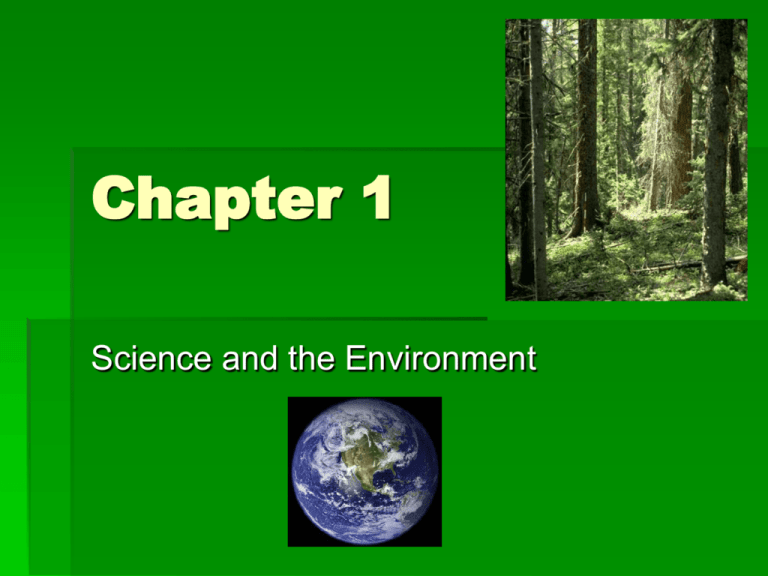
Chapter 1 Science and the Environment Understanding Our Environment Environment: a complex web of relationships that connects us with the world we live in Environmental Science: the study of how humans interact with the environment Goals of Environmental Science To understand and solve environmental problems We must be able to identify causes and describe solutions Human Impact Humans live within the world’s ecosystems and therefore change them as a result of population growth, technology, and consumption Problems: habitat destruction, pollution, atmospheric changes, over fishing the oceans, poaching, etc. Consequences If environmental problems are not addressed, ecosystems will be irreversibly damaged Human populations NEED natural resources in order to maintain and improve their existence Misconception News stories often focus on efforts to save threatened or endangered species There can also be problems with overpopulation of species within an ecosystem Ex: zebra mussels, house sparrows, European starlings, fire ants, kudzu vine Many Fields of Study Environmental science is an interdisciplinary science (involves many fields of study) ECOLOGY: the study of how living things interact with each other and with the nonliving environment Major Fields of Study Biology: study of living organisms Earth Science: study of the Earth’s nonliving systems and the planet as a whole Physics: study of matter and energy Chemistry: study of chemicals and their interaction Social Science: study of human populations Scientists as Citizens Studying our environment is vital to maintaining a healthy and productive society Observations by nonscientists are often the first step of addressing a problem Our Environment Through Time Humans have always altered the environment to suit their needs, often without a regard for its long-term impacts Early humans were hunter-gatherers (H-G) (they obtained food by collecting plants and by hunting animals or scavenging their remains) Hunter-Gatherers (H-G) Early H-G groups were small and migrated from place to place depending on food abundance Some H-G societies today include aborigines and tribes in New Guinea Extinction Rapid climate change and over-hunting of some species led to their extinction Examples: mastodons and mammoths Conservation Some H-G groups were very aware of the need for conservation Native Americans did not kill what they could not use Although they hunted buffalo, it was the American settlers who slaughtered them nearly to the point of extinction Agricultural Revolution H-G began collecting seeds to plant and domesticating animals to raise food Agriculture began more than 10,000 years ago Agricultural Revolution Through agriculture, an area of land was able to support 500X as many people As populations grew, they began to concentrate in smaller areas which placed pressure on surrounding environments Slash-and-Burn Agriculture Causes many areas to become unusable after a few years Common in rainforest areas Industrial Revolution Mid 1700’s: shift from energy sources such as animal muscle and running water to fossil fuels (coal, oil, natural gas) Caused major changes in society Increased the efficiency of agriculture, transportation, and industry Industrial Revolution (I-R) Large-scale production of goods became common Farm machinery decreased the amount of human workers needed Cotton picked by slaves vs. cotton gin Environmental Consequences Transportation rapidly developed allowing products to be distributed over greater distances As people experienced a new standard of living, the environment suffered at our expense Salt and Pepper Moth (Biston betularia) H.G. Kettlewell’s study: both white and black moths exist BEFORE I-R, white moths were more common (camouflaged on white tree bark with lichens) AFTER I-R, black moths were more common (camouflaged on soot covered tree bark) Improving Quality of Life I-R introduced many changes that improved human lives such as indoor plumbing, nutrition, and medical care As human populations grow, environmental problems increase Rachel Carson By the 1900’s, pesticides were widely used and caused many health problems that were ignored Rachel Carson wrote Silent Spring (1962) which called attention to the misuse of pesticides and began the environmental movement Spaceship Earth Earth is compared to a ship traveling through space that cannot dispose of waste or take on new supplies Closed system: the only thing that enters is solar energy and the only thing that leaves is heat Closed System Resources can be used up! Wastes are produced faster than we can dispose of them Environmental Problems Exist on three different scales: local, regional, and global LOCAL: Columbiana County REGIONAL: Northeast Ohio GLOBAL: Affects the world Main Environmental Problems Resource depletion Pollution Extinction Resource Depletion Natural resources: any natural substance that living things can use Examples: air, water, sunlight, soil, minerals, plants, animals, forests, and fossil fuels When a resource is used up faster than it can be replaced, it will become depleted! Renewable Resources Resources that are continually being replaced Examples: solar energy, water, soil, air, crops, livestock, trees Can still be depleted if not managed properly Nonrenewable Resources Resources that cannot be replaced…once depleted, they are gone FOREVER! Examples: metals such as iron, copper, and aluminum, minerals such as salt, sand, and clay, fossil fuels Pollution Contamination of our air, water, or soil that affects the health, survival, or activities of humans or other organisms Human byproducts are the main causes of pollution Examples: pesticides, radiation, petroleum products, PCB’s, mercury, CO2 Biodegradable Pollutants Pollutants that can be broken down by natural processes Example: human sewage Nondegradable Pollutants Pollutants that do not break down easily Accumulate in the environment at dangerous levels Examples: pesticides, mercury, lead, PCB’s Loss of Biodiversity Biodiversity: the number and variety of species that live in an area Many species become extinct due to habitat destruction or polluted ecosystems Extinction Every last individual of a species has died and the species is gone forever Examples: dodo, passenger pigeon, great auk Animals and plants are natural resources that we depend on to exist Biosphere All life on Earth AND the physical environment that supports it Damage to any part of an ecosystem can have a ripple effect that can negatively impact the entire biosphere What can YOU do to help protect the world?

